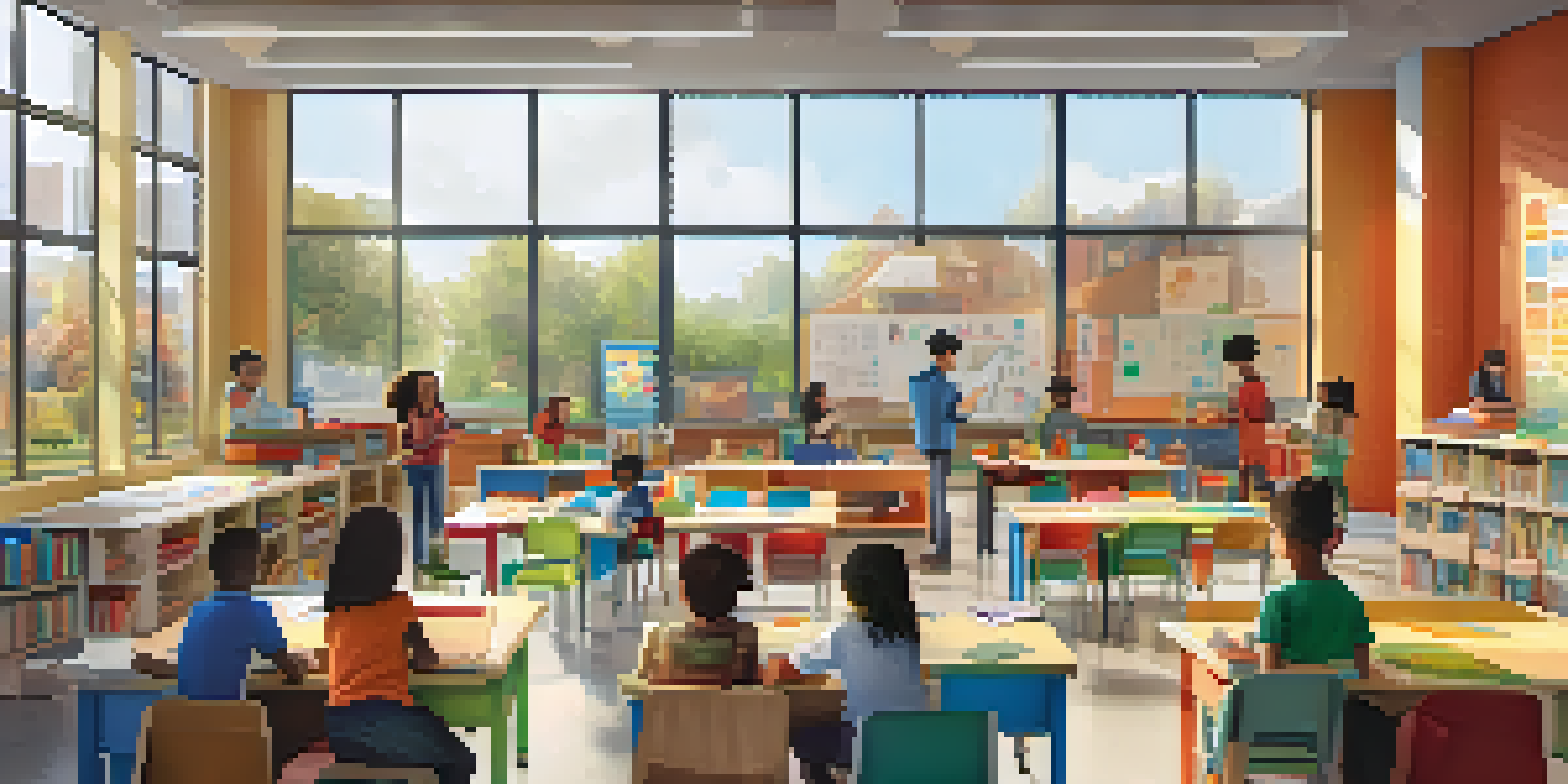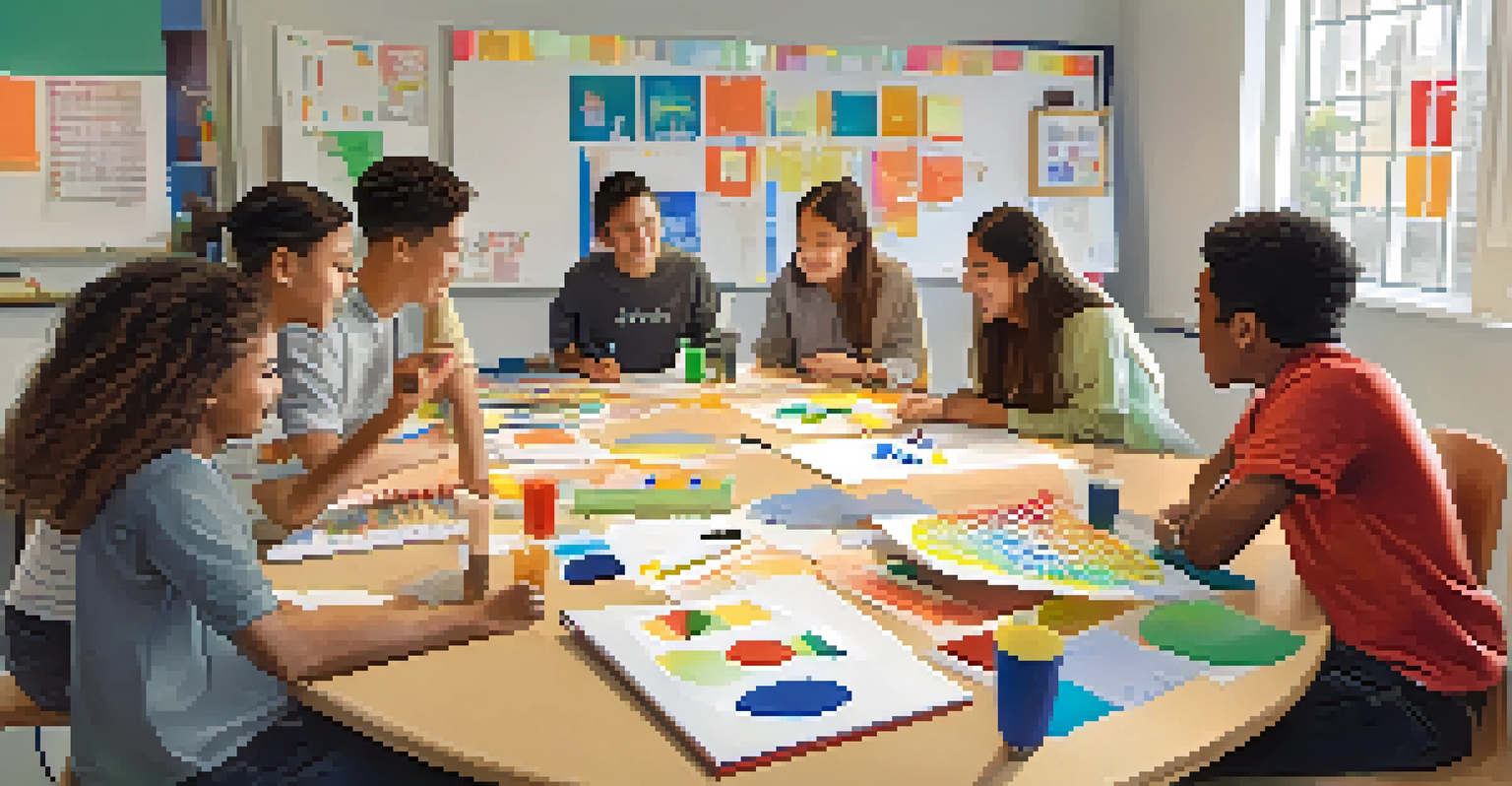Personalized Learning and Neurodiversity: A Tailored Approach

Understanding Personalized Learning in Education
Personalized learning is an educational approach that tailors learning experiences to meet individual student needs. This method recognizes that each learner has unique strengths, interests, and challenges. By adapting teaching strategies and resources, educators can create a more inclusive environment that fosters engagement and success for every student.
Every learner is unique, and personalized education is the key to unlocking their potential.
For instance, instead of a one-size-fits-all curriculum, personalized learning allows teachers to modify lessons based on a student’s learning style. Visual learners might benefit from diagrams and videos, while kinesthetic learners may excel through hands-on activities. This adaptability ensures that students not only grasp the material but also enjoy the learning process.
Ultimately, personalized learning shifts the focus from traditional teaching methods to a more student-centered approach. This means that educators become facilitators, guiding students on their individual learning journeys while providing the necessary support and resources.
The Importance of Neurodiversity in Education
Neurodiversity encompasses a range of neurological differences, including autism, ADHD, dyslexia, and more. Understanding and embracing neurodiversity in educational settings is crucial, as it promotes acceptance and recognizes the value of diverse cognitive profiles. Each neurodiverse learner offers unique perspectives and talents that can enrich the classroom environment.

For example, a student with dyslexia may struggle with reading but excel in creative thinking and problem-solving. By valuing these strengths, educators can help all students appreciate the diverse abilities within their peer group. This not only fosters empathy but also encourages collaboration among students.
Personalized Learning Enhances Engagement
Tailoring educational experiences to individual student needs fosters greater engagement and success in learning.
When schools adopt a neurodiversity-affirming approach, they create a culture of inclusivity and respect. This helps all students feel valued and understood, contributing to a more harmonious learning environment where everyone can thrive.
Tailoring Learning for Neurodiverse Students
Tailoring learning for neurodiverse students involves understanding their specific needs and preferences. This can include providing alternative assessments, flexible deadlines, and varied instructional methods. By recognizing that traditional testing may not accurately reflect a neurodiverse learner's knowledge, educators can create a more equitable learning experience.
Inclusion is not a matter of political correctness. It is the key to growth.
For instance, a student with ADHD might benefit from shorter, more engaging tasks that allow for frequent breaks. On the other hand, a student on the autism spectrum may thrive in structured environments with clear expectations. By offering choices and opportunities for self-directed learning, educators empower neurodiverse students to take charge of their own educational journeys.
Ultimately, the goal is to create a personalized educational experience that caters to varied learning styles. This approach not only enhances academic outcomes but also fosters a sense of belonging and confidence in neurodiverse learners.
Innovative Tools for Personalized Learning
Technology plays a vital role in facilitating personalized learning experiences for neurodiverse students. Various educational tools and software can be tailored to accommodate diverse learning styles and preferences. For example, interactive apps and online platforms can provide adaptive learning paths that align with individual student needs.
Furthermore, assistive technologies such as speech-to-text software and audiobooks can support students with reading difficulties. These tools help bridge the gap between traditional learning methods and the unique requirements of neurodiverse learners. By integrating technology into the classroom, educators can create dynamic and engaging learning environments.
Embracing Neurodiversity Enriches Classrooms
Recognizing and valuing neurodiversity in education promotes acceptance and enhances the learning environment for all students.
As technology continues to evolve, so do the possibilities for personalized learning. Embracing innovative tools not only enhances educational outcomes but also prepares students for a tech-driven world where adaptability and creativity are essential.
The Role of Educators in Personalized Learning
Educators are at the forefront of implementing personalized learning strategies in the classroom. Their understanding of student needs and learning styles is crucial in tailoring educational experiences. By building strong relationships with students, teachers can identify individual strengths and areas for growth, fostering a supportive learning atmosphere.
Moreover, professional development opportunities can equip educators with the skills needed to effectively implement personalized learning. Training in neurodiversity and differentiated instruction ensures that teachers are well-prepared to meet the diverse needs of their students. Continuous learning and collaboration among educators can lead to the development of innovative teaching practices.
Ultimately, the success of personalized learning hinges on the dedication and creativity of educators. By prioritizing individualized approaches and advocating for neurodiverse learners, teachers can make a lasting impact on their students’ educational experiences.
Creating an Inclusive Classroom Environment
An inclusive classroom environment is essential for the success of personalized learning. This involves not only adapting teaching methods but also fostering a culture of acceptance and understanding among students. Encouraging peer support and collaboration can help neurodiverse learners feel more comfortable and engaged.
In practice, inclusive classrooms can incorporate various strategies, such as cooperative learning activities and group projects. These opportunities allow students to work together, leveraging each other's strengths and perspectives. As a result, neurodiverse students can benefit from shared experiences while building social skills.
Technology Supports Personalized Learning
Innovative educational tools and assistive technologies play a crucial role in facilitating personalized learning for neurodiverse students.
Furthermore, promoting open discussions about neurodiversity can help demystify differences and reduce stigma. By creating a safe space for all students to express themselves, educators empower neurodiverse learners to thrive academically and socially.
Measuring the Success of Personalized Learning
Measuring the success of personalized learning for neurodiverse students is essential for continuous improvement. Educators can utilize various assessment methods to evaluate student progress and adapt their strategies accordingly. This may include both formative assessments, such as quizzes and projects, and summative assessments, like exams.
Additionally, collecting feedback from students and parents can provide valuable insights into the effectiveness of personalized learning approaches. This collaborative process helps educators understand what works and what needs adjustment, ensuring that all students receive the support they need to succeed.

Ultimately, by regularly assessing the impact of personalized learning, educators can make informed decisions that enhance educational outcomes for neurodiverse learners. This commitment to continuous growth and adaptation is crucial for fostering an inclusive and effective educational environment.